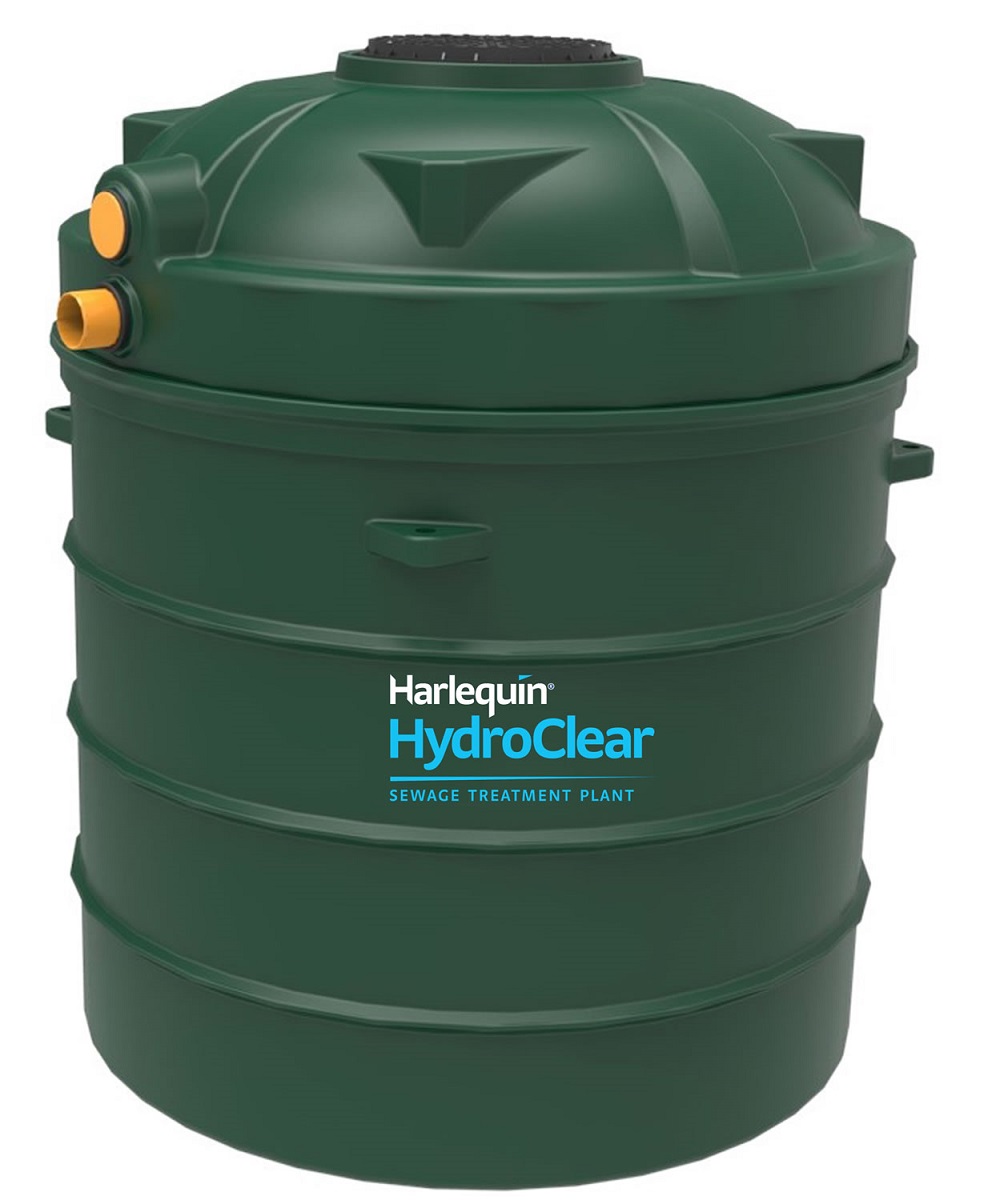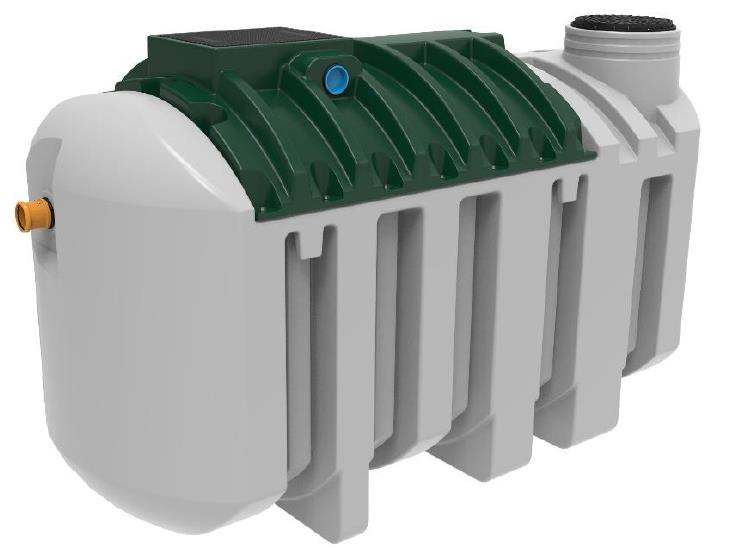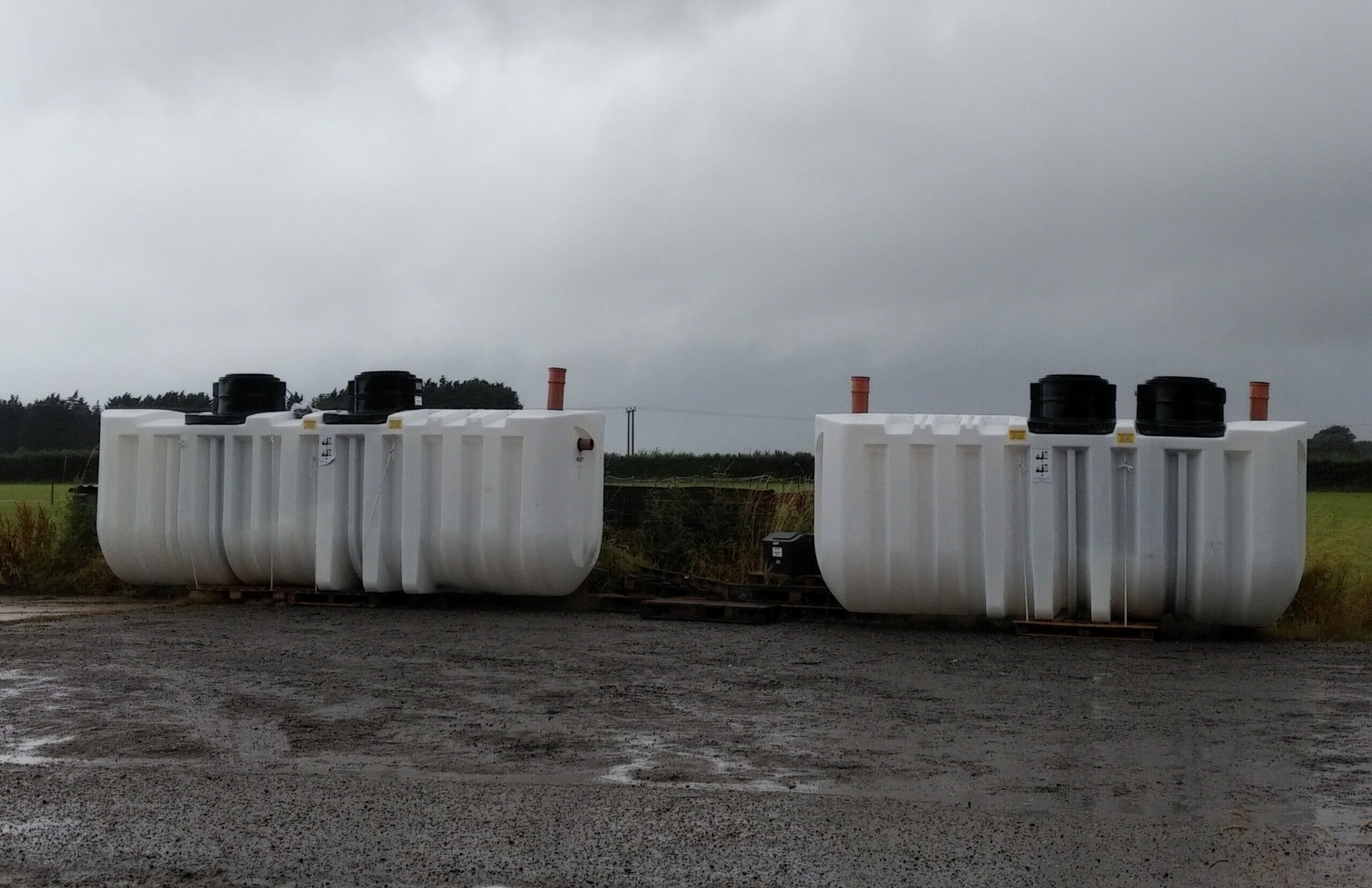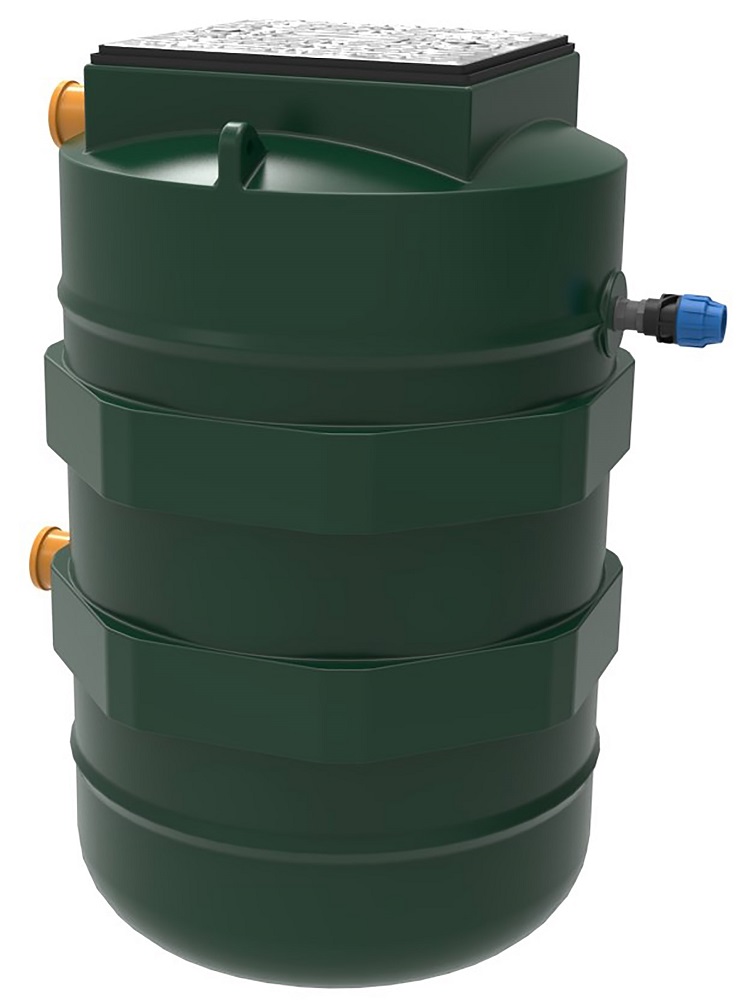The wastewater from toilets, bathrooms, kitchen and laundry appliances must be treated before it is safe to release into the environment. While cesspits and septic tanks have for centuries been the only solution, sewage treatment plants are now the preferred option as they work more efficiently and are better for the environment.
In this blog post, we give a brief outline of the various sewage treatment systems that are now available.
How do I know what size sewage treatment plant I need?
To make size selection easy, all Harlequin sewage treatment plants and continuous aeration plants have product codes that end with a number that indicates the maximum population the system can serve. Hence the HydroClear HC6 and CAP6 can both serve up to 6 people, whereas a CAP18 is sufficient for 18 people and an HC50 will provide for 50 people.
You’ll find this helpful in understanding the following content; however, we always advise you to over-specify if your requirements are on the borderline or likely to increase temporarily or over time.
Domestic Sewage Treatment
Stricter legislation designed to reduce the pollution of land, aquifers and watercourses has restricted the instances in which a septic tank may be used. This means that, except for a few circumstances where a permit may be obtainable, private properties can no longer use septic tanks for new installations.
Tanks-UK supplies the HydroClear sewage treatment plant and CAP continuous aeration plant ranges from Harlequin which, with each having three categories serving 1-6 people, 7-9 people and 10-12 people, are equally suitable for domestic installations.
Continuous aeration plant vs. sewage treatment plant

A continuous aeration plant such as the CAP6, CAP9 and CAP12 performs many of the functions of a fully-fledged sewage treatment plant, but in a more compact unit. They are quiet running and thanks to their sealed system, emit no smell other than when they are being emptied. A ground-level air blower installed in a weatherproof housing generates additional airflow to stimulate the biological treatment process inside the tank. As this achieves 96% overall pollutant removal, the treated wastewater can legally be discharged into the ground.
 HydroClear sewage treatment plants such as the HC6, HC9 and HC12 feature larger capacity chambers than a continuous aeration plant so are more able to cope with peak usage. HydroClear plants also work more efficiently, with a characteristically higher level of pollutant removal enabling them to discharge treated wastewater directly into a ditch or watercourse.
HydroClear sewage treatment plants such as the HC6, HC9 and HC12 feature larger capacity chambers than a continuous aeration plant so are more able to cope with peak usage. HydroClear plants also work more efficiently, with a characteristically higher level of pollutant removal enabling them to discharge treated wastewater directly into a ditch or watercourse.
Here is a comparison chart of overall capacity and pollutant removal:
| CAP6 | HC6 | CAP9 | HC9 | CAP12 | HC12 | |
| Tank capacity – Primary settlement chamber | 1200 litres | 1315 litres | 1800 litres | 2295 litres | 2295 litres | 2510 litres |
| Aeration chamber | 600 litres | 790 litres | 900 litres | 1245 litres | 1245 litres | 1685 litres |
| Final settlement | 600 litres | 600 litres | 900 litres | 935 litres | 935 litres | 2040 litres |
| Pollutant removal | 96.2% | 97.5% | 96.2% | 97.5% | 96.2% | 97% |
Commercial Sewage Treatment
 Commercial and industrial premises also sometimes require off-grid sewage management facilities, while hotels, campsites, leisure parks and public toilets in remote areas will require a larger-capacity solution than a domestic sewage treatment plant.
Commercial and industrial premises also sometimes require off-grid sewage management facilities, while hotels, campsites, leisure parks and public toilets in remote areas will require a larger-capacity solution than a domestic sewage treatment plant.
Larger HydroClear models such as the HC20, HC30 and HC40 have two joined tanks per system to provide additional capacity, while the HC50 has three.
In the Harlequin CAP range, the CAP15 and CAP18 are suitable for medium-sized commercial applications while retaining the more compact dimensions of CAP products.
Harlequin has also recently launched a range of commercial-scale sewage treatment plants, which are designed for larger commercial applications that need to serve 50-600 people. Manufactured from sheet moulding compound (SMC), they are more structurally secure than smaller units and include features that make them ideal for larger commercial applications.
Pump Stations
 If a main sewer is reasonably close but distance or an uphill gradient makes normal connection impossible, a pump station may be sufficient.
If a main sewer is reasonably close but distance or an uphill gradient makes normal connection impossible, a pump station may be sufficient.
Rather than treating the sewage, a pump station temporarily stores it in a holding tank and when this reaches a certain level, pumps it through a pipe to the main sewer.
For domestic use, the holding tank capacity of Harlequin pump stations ranges from 450-3200 litres. Contact us as a trusted Harlequin partner for more information on the best pump station for your requirements.
For larger installations, we combine SPEL underground GRP storage tanks (which offer extra capacity up to 30,000 litres and better longevity) with an integral pump station package as a complete solution.
If you would like more information on sewage treatment plants, continuous aeration plants and pump stations, call Tanks-UK on 01953 665940 or email info@tanks-uk.com to speak with our friendly, knowledgeable team.

